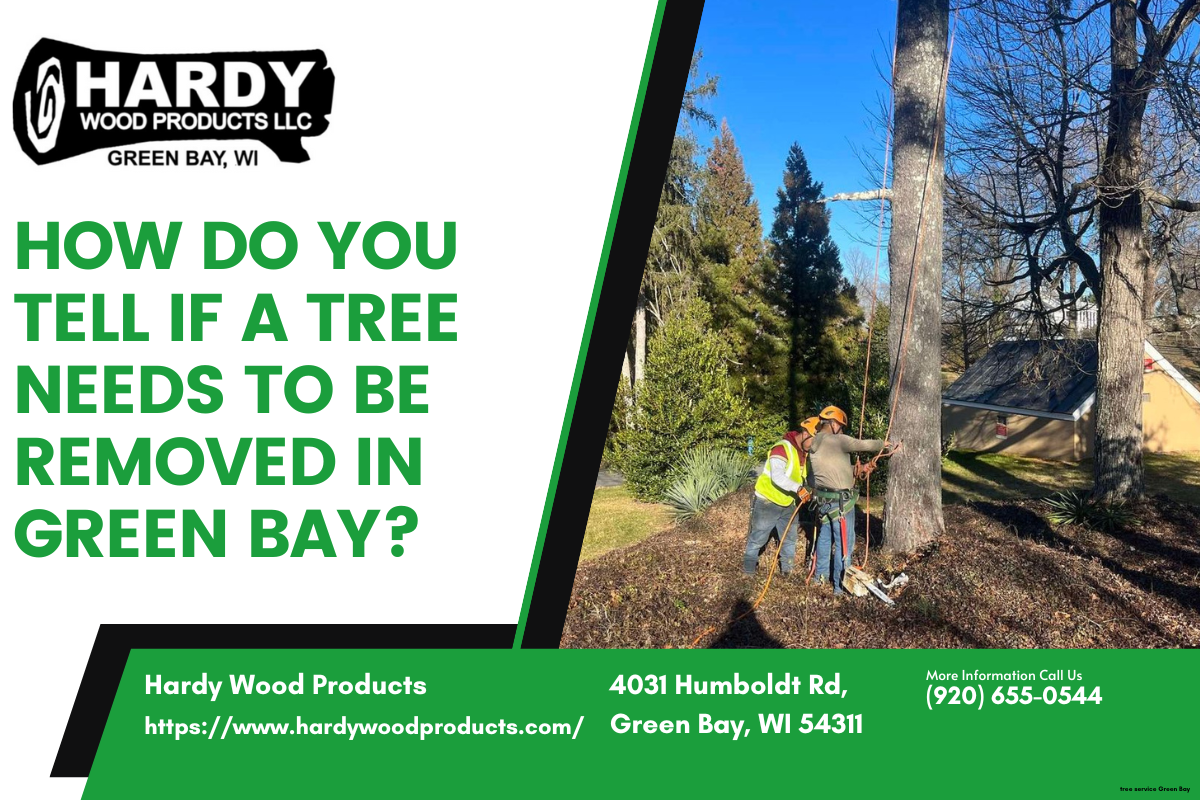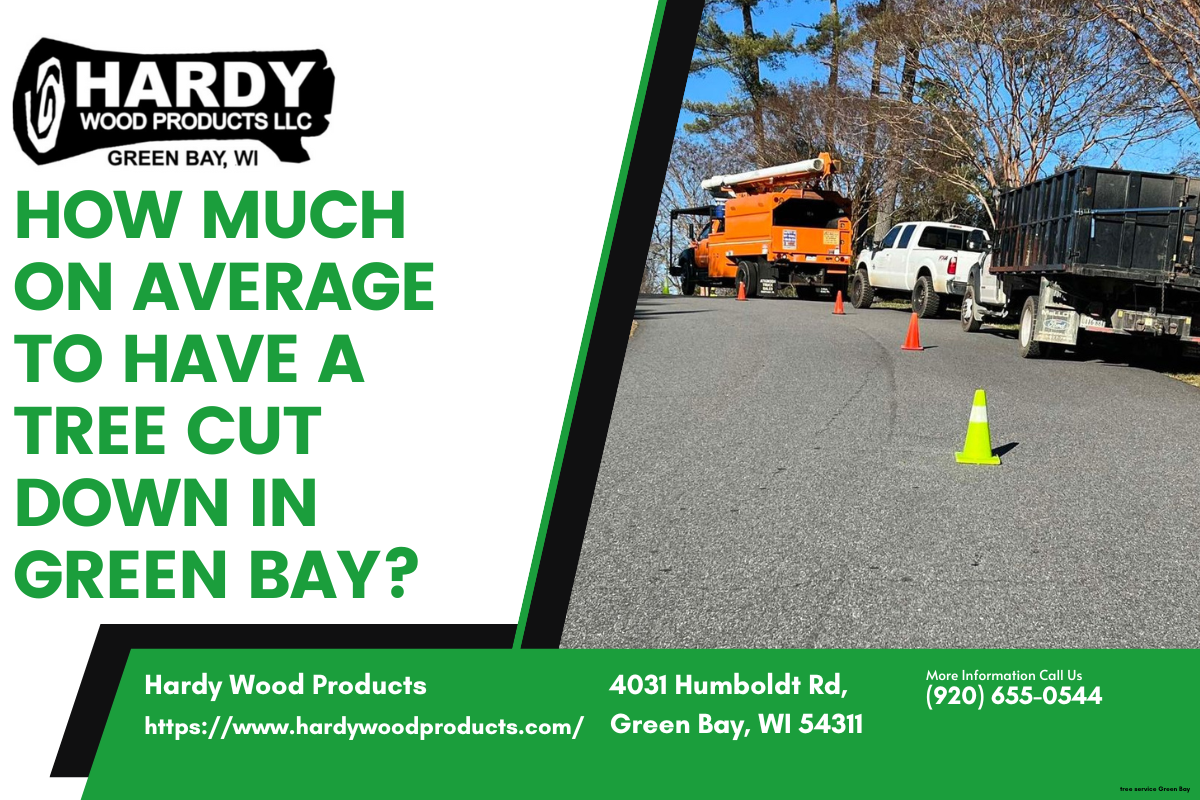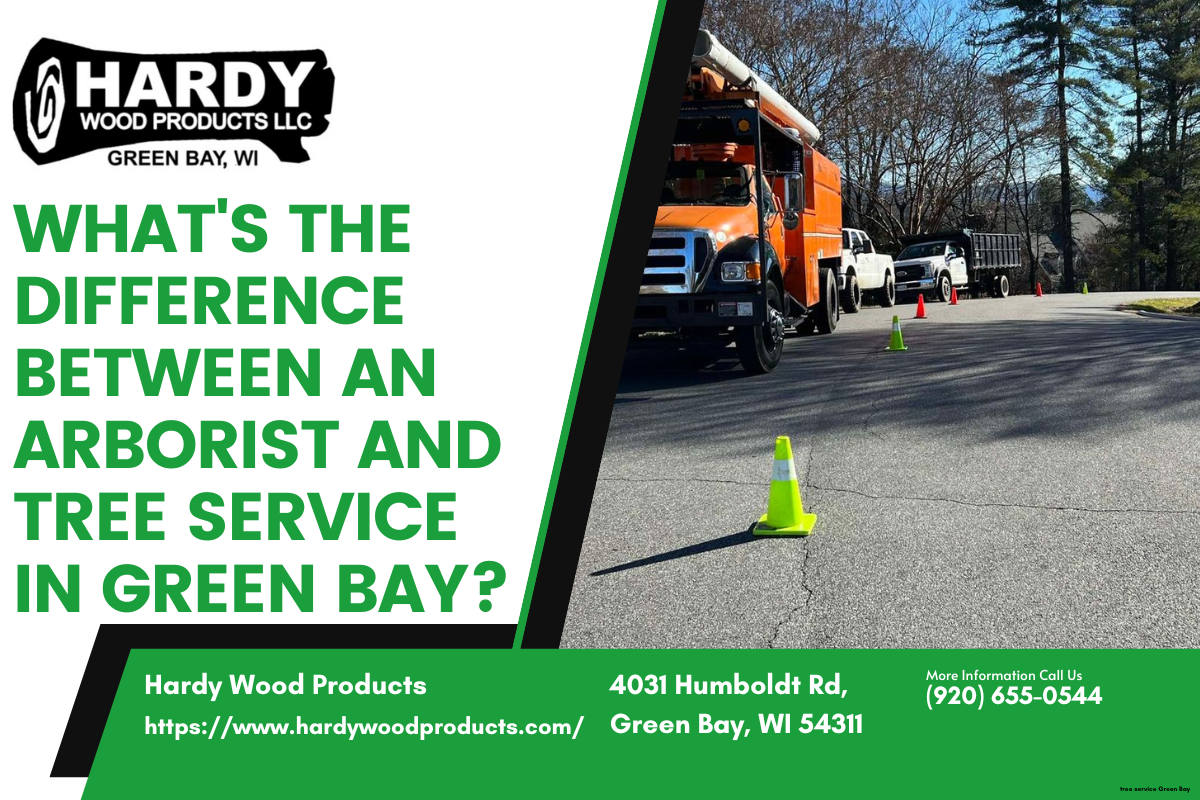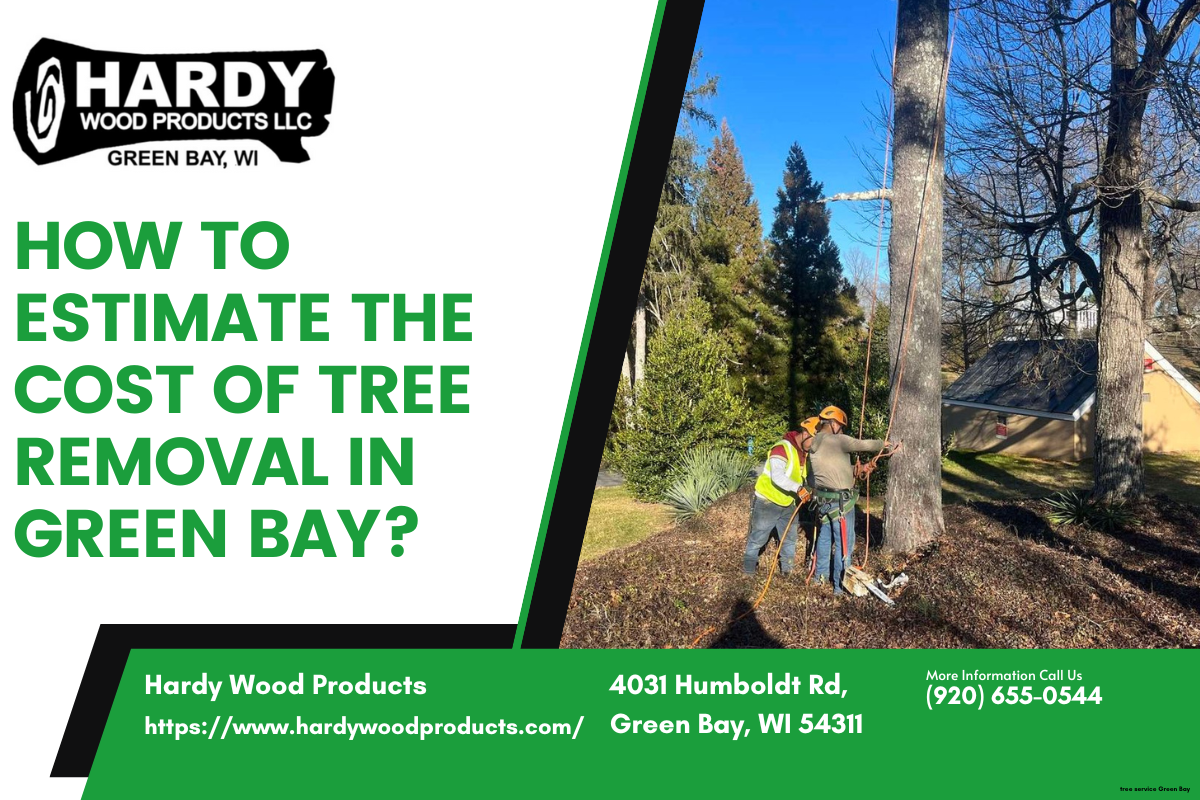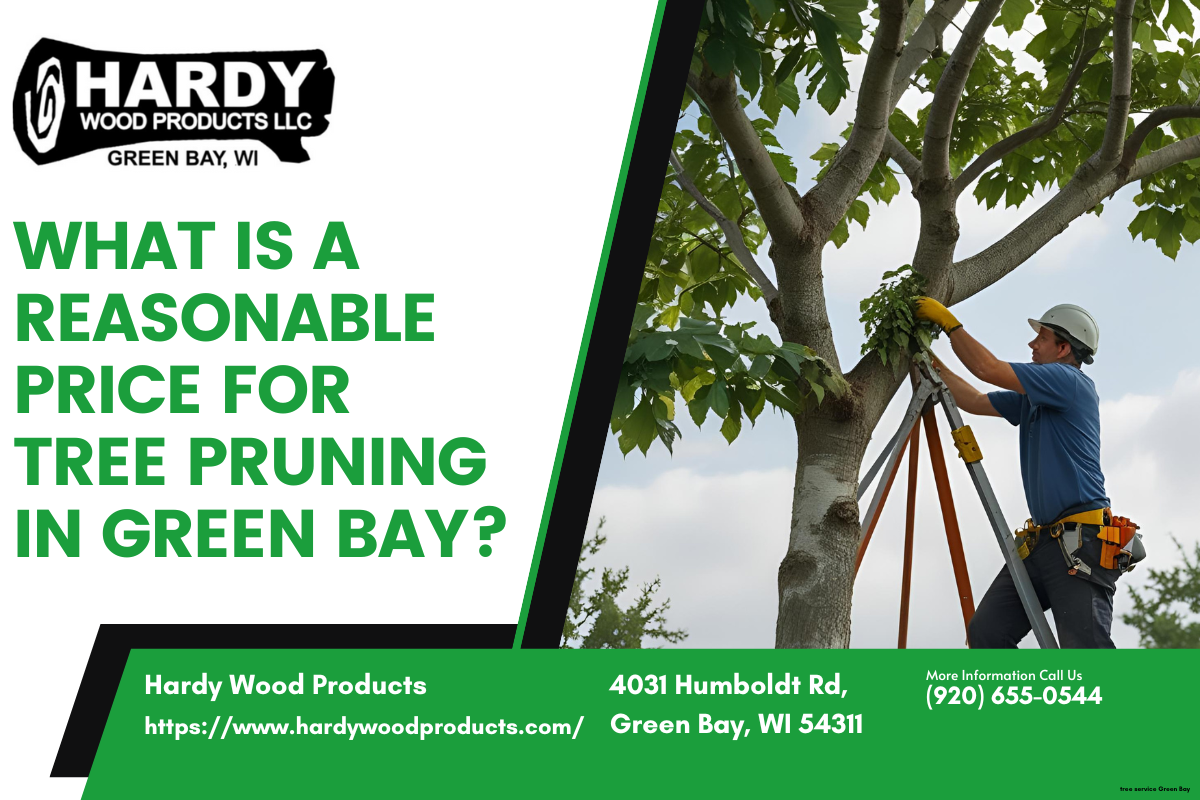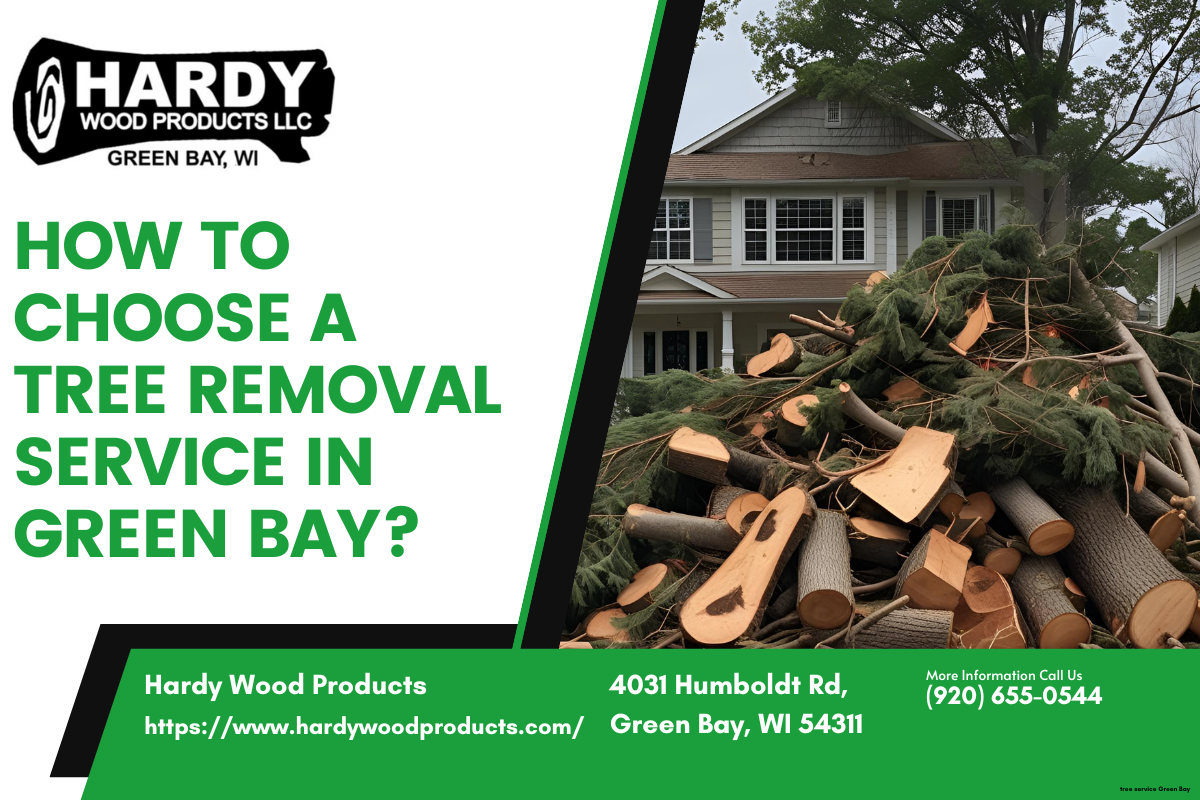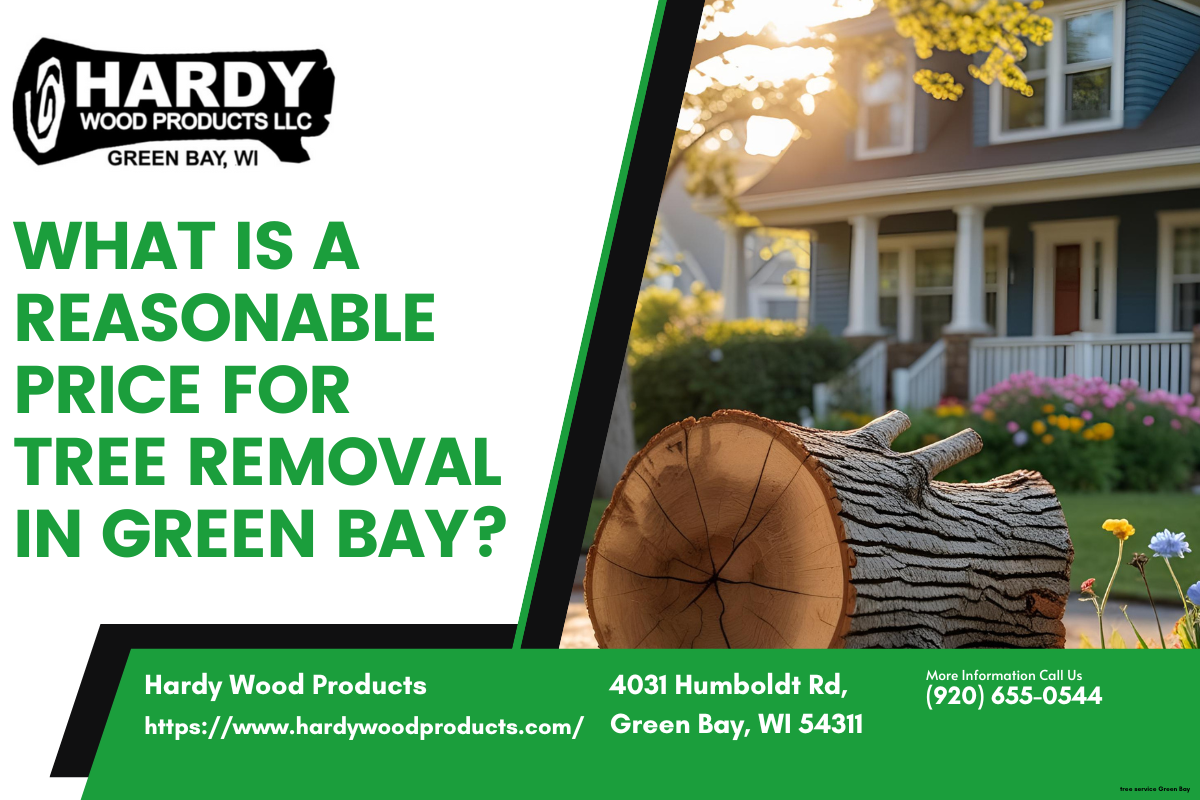TABLE OF CONTENTS
To determine if a tree in Green Bay needs to be removed, you must first identify who is legally responsible for it: you, the City of Green Bay, or Wisconsin Public Service (WPS). This crucial first step dictates the entire process, from assessment to removal, and is more important than evaluating the tree's health alone.
As a homeowner in Green Bay, looking out at your yard and seeing a large, mature tree that seems a little off can be unsettling. Maybe its canopy is getting thin, it's leaning more than it used to, or you've noticed a suspicious fungus on the bark. Your first instinct might be to search for "how to tell if a tree is dying," but here in Northeast Wisconsin, that's only part of the story. The most critical question isn't just about the tree's health; it's about its location. Before you can even begin a proper tree health evaluation, you have to determine whose responsibility it is. This single factor changes everything.
The Crucial First Step: Is It Your Tree or a 'City Tree'?
Many Green Bay homeowners don't realize that the beautiful maple tree in their front yard between the sidewalk and the street isn't actually theirs to manage. This area, known as the terrace or public right-of-way, is under the care of the Green Bay Forestry Division. This is the most important distinction to make when considering tree removal.
The City of Green Bay is responsible for the care and maintenance of all public trees located in street right-of-ways (terrace areas) and in city parks. In fact, the city's Forestry department manages a staggering 40,000 trees across our community.
How to Identify a City Tree:
- Location: If the tree is planted in the strip of grass between the public sidewalk and the curb, it's almost certainly a city tree.
- Park Adjacency: Trees located in or directly bordering a city park fall under city jurisdiction.
If you suspect a city tree is dead, dying, or hazardous, you should not hire a private service. Instead, contact the Green Bay Forestry Division directly. They will conduct a professional tree inspection and, if necessary, schedule the work for trimming or removal at no direct cost to you. It's also critical to know that homeowners may not plant, prune, or remove a terrace tree without first obtaining a permit from the City Forester. Attempting to do this work yourself can lead to fines and liability issues.
Beyond Your Fence: When Wisconsin Public Service (WPS) Steps In
The next layer of responsibility involves utility infrastructure. If a tree—whether on your private property or on the terrace—is threatening power lines, Wisconsin Public Service (WPS) has a specific role and authority. This is a matter of public safety and service reliability.
According to their guidelines, WPS is required by law to maintain a safe distance between trees and high-voltage power lines. These are typically the thick lines running from pole to pole along the street. If you notice branches near power lines of this type, WPS will schedule their own qualified line clearance trimmers to perform the necessary work. This power line clearance trimming is done on a regular cycle to prevent outages, especially before a classic Green Bay storm rolls through.
However, there's a key difference for the service line that runs from the utility pole directly to your house. For these lines, WPS will clear branches at no charge only if they are rubbing on or pulling on the line. If branches are simply growing nearby but not making contact, the trimming is typically the homeowner's responsibility.
Decoding Green Bay's Health Red Flags: Your Private Property Checklist
Once you've confirmed a tree is entirely on your property and not interfering with power lines, the responsibility for a tree risk assessment is yours. Here in Brown County, we face specific regional threats that go beyond general advice. At what point should a tree be removed? Look for these signs a tree needs removal, which are particularly relevant in Green Bay.
- Signs of Disease or Pests: Watch for symptoms of a sick oak tree, especially Oak Wilt, which is a serious concern in Wisconsin. Telltale signs include sudden leaf discoloration and wilting from the top down in mid-summer. Also, be aware of the signs of emerald ash borer, which include D-shaped exit holes in the bark and significant dieback in the tree's upper canopy.
- Major Structural Damage: A cracked tree trunk is a major red flag. While some minor cracks can be addressed with tree cabling and bracing, a deep, split trunk often signals an imminent failure. Likewise, a hollow tree trunk can be a serious hazard, as it indicates internal decay that compromises the tree's strength.
- Sudden or Significant Leaning: A leaning tree poses a danger, especially common in Wisconsin after soil becomes saturated from heavy rains or snowmelt. Look for heaving soil and exposed roots on the side opposite the lean—this is a sign the root system is failing. Is my tree a hazard to my house? If it's leaning toward a structure, the answer is likely yes.
- Extensive Deadwood: While pruning dead branches is normal maintenance, if more than 50% of the tree is dead or damaged, it's often more cost-effective and safer to opt for a full removal. Look for large branches with no leaves in the growing season or brittle, peeling bark. For evergreens, what does a dead pine tree look like? Its needles will turn brown and drop, leaving bare, brittle branches.
If you see any of these signs, it's time for a professional tree inspection from a certified arborist in Green Bay. They can provide a definitive tree health evaluation and help you understand the true level of risk. An arborist consultation can also help answer questions about the cost of tree removal in Green Bay, as the price depends heavily on the tree's size, location, and the complexity of the work (e.g., requiring crane assisted tree removal).
Making the Right Choice for Your Needs
Navigating tree removal involves understanding your specific situation. Here’s how to approach it based on your circumstances.
The 'Terrace Tree' Homeowner
If you own property with a tree in the public right-of-way (between the sidewalk and street), your first and only call should be to the Green Bay Forestry Division. Do not hire a private service. Report your concerns to them and let their experts handle the Green Bay hazardous tree assessment. They will determine the appropriate action and schedule the work according to their protocols.
The 'Power Line' Homeowner
For a tree on your property growing near utility lines, assess which lines are affected. If branches are touching or threatening the main high-voltage lines running pole-to-pole, contact WPS. If they are simply near the service line to your home but not touching it, you will likely need to hire professional tree felling specialists. In this case, safety is paramount; never attempt this trimming yourself.
The 'Private Property' Homeowner
If the tree is clearly within your property lines and away from utility lines, the responsibility is yours. Use the checklist above to perform an initial assessment. If you notice significant red flags like deep cracks, a sudden lean, or widespread disease, it’s time to seek tree removal quotes in Green Bay from a licensed and insured tree service. Even if a tree removal permit in Green Bay isn't typically required for private property, a professional service will understand all relevant local tree care ordinances.
Ultimately, the decision to remove a tree is about ensuring the safety of your home and family. For a comprehensive, on-site assessment and a clear, fair quote for residential or commercial tree cutting services, the team at Hardy Wood Products is here to help. Our ISA certified arborists provide the expertise needed for safe tree felling services, from stump grinding to storm damage tree cleanup, ensuring you can make your decision with confidence. Contact us today for a professional arborist consultation.
.png)
